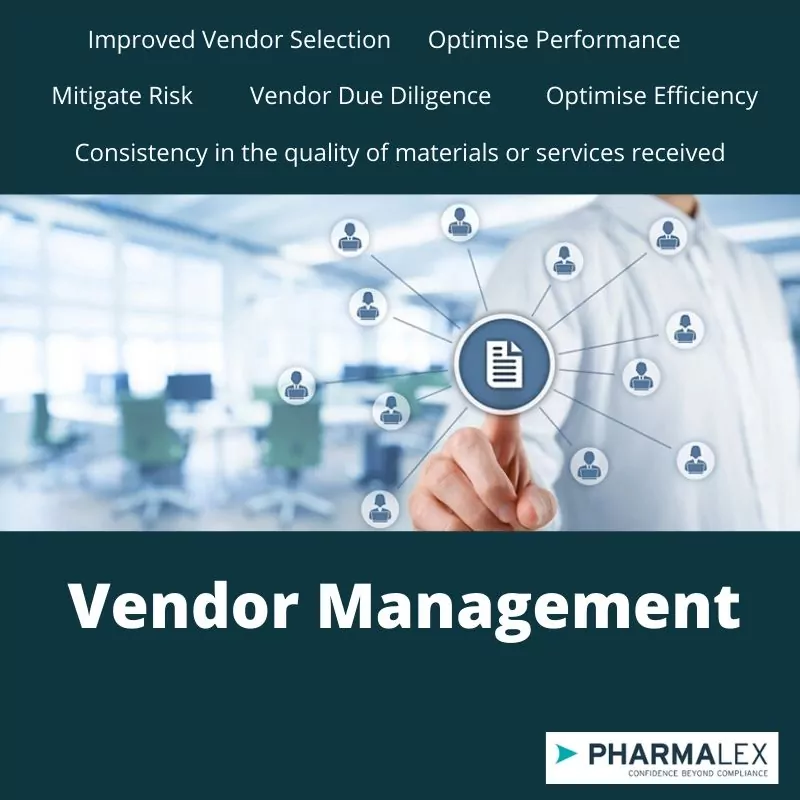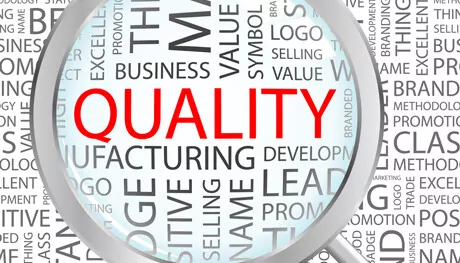Vendor Management
The use of external vendors in the pharmaceutical industry can often provide a cost-effective mechanism for increasing operational efficiency and productivity for an organisation. Pharmaceutical companies regularly engage with external vendors for the provision of a variety of services and materials that can be used throughout the product lifecycle from product development right through to commercial distribution.
However, while companies can delegate aspects of their operations to external vendors via contractual agreements, they cannot delegate responsibility and must continue to ensure that the quality of the products and services they receive are appropriate. Annex 16 of the EU Guidelines for GMPs “Certification by a Qualified Person and Batch Release” outlines that the Marketing Authorisation Holder (MAH) is responsible for the safety, quality and efficacy of a medicinal product and must have full oversight of their supply chain with sufficient controls in place to ensure that products are manufactured and distributed with GMP and GDP requirements. This can be further viewed by clicking on the following link; EU GMP Annex 16 . Similarly, ICH Q10 “Pharmaceutical Quality System” states that all companies, virtual or otherwise, are ultimately responsible for the products they place on the market. This guideline can be viewed at the following link; ICH Q10.
Selection of an appropriate vendor and periodic evaluation of the vendor is therefore a critical stage in the product lifecycle to ensure consumer demands for high quality products are met while also meeting high regulatory standards. PharmaLex have supported many organisations in the development of vendor management programmes and tailored these to match the business needs of individual organisations. By having a robust vendor management programme in place, an organisation can benefit in one or all of the following areas:
- Improved Vendor Selection: The vendor selection process should consider items such as capacity, contingency planning and vendor capability. Once selected, vendors should be classified according to their level of risk or importance on the quality, safety and efficacy of the final product.
- Mitigate Risk: A formal assessment of the vendor quality system is required once the short-list of vendors is determined, to establish if the vendor has sufficient evidence of control over their internal processes. The level of assessment should be commensurate to the risk level applied to the vendor and once the risks are identified the necessary steps can be taken to mitigate against these risks. For non-critical vendors, the quality assessment may be limited to a specific section of the vendor questionnaire and /or the provision of an ISO 9001 or equivalent certificate whereas for vendors which are higher risk and provide critical materials/services, an onsite audit should be performed.
- Vendor Due Diligence: The performance of audits, vendor questionnaires, bona fides checks are examples of the types of due diligence checks that are used to ensure potential vendors are capable of successfully meeting your organisation’s needs.
- Optimise Efficiency: Having vendor management procedures and processes in place allows vendors to be onboarded and utilised more efficiently. In addition, the categorisation of vendors according to their level of risk allows you to determine the level of oversight required for each vendor. High risk vendors require more stringent oversight than that of low risk vendors.
- Consistency in the quality of materials or services received: Establishing contractual Quality and Technical Agreements where responsibilities, expectations and processes are outlined can help ensure the supply of materials/ services are fit for purpose.
- Optimise Performance: Once Key Performance Indicators (KPIs) are established and communicated to a vendor, monitoring the KPIs will allow your organisation to identify the strengths of a vendor and where improvement is required. Examples of KPIs may include complaints, OOS results, rejected batches.
Whether you are seeking support with the development of a vendor management process or are seeking to outsource the vendor management oversight element(s) of your organisation our experienced experts are here for you. PharmaLex have built up a wealth of expertise over the years and have a proven record of the ability to deliver in line with their company tagline “Confidence beyond Compliance”. Why not get in touch to find out more on the range of services that we offer by connecting with us on +353 1 846 4742 or email us at contactirl@pharmalex.com.








